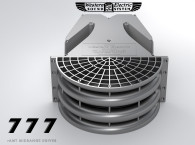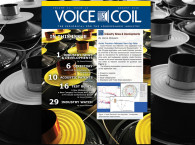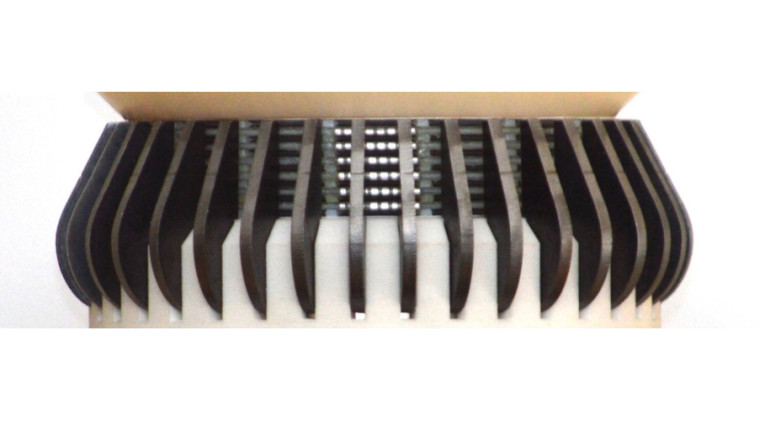
As described in the recently granted US Patent 9,124,964 (others pending), this new technology represents a radical improvement of the basic and well-known Air Motion Transformer (AMT) technology as originally developed by Dr. Oskar Heil and ESS Labs in the 1970s.
This new wide-range, wide-angle loudspeaker driver technology (see Photo 1) is purported to have the following advantages over all other types of loudspeaker drivers, including moving coil drivers, electrostatic panels, planar-magnetic panels, plasma-ion tweeters, magneto-strictive drivers, ribbon drivers, piezo-electric tweeters and traditional square or rectangular AMT drivers. Other advantages include:
• Much wider frequency bandwidth: Mid-tweeters based on this new technology can be used from several hundred hertz up to 20 kHz or more, while dedicated midranges can cover approximately 100 Hz to 5 kHz at very high power levels and with much lower distortion than moving coil drivers.
• Wider horizontal angular coverage at all frequencies: This technology can uniformly cover any desired horizontal coverage angle, from 90° or less all the way up to 360°, using a single driver, with zero beaming or lobing at any audio frequency.
• Extremely wide vertical angular coverage: Essentially the same as that for a typical 0.75” to 1” moving coil, dome tweeter at high frequencies.
• Extremely high power handling and very low distortion: Much better than typical moving-coil drivers due to improved cooling of the conductive elements.
• Superb time domain performance: This technology provides lightning-quick and nearly ideal transient response, with none of the diaphragm break-up issues and other time domain response-smearing behavior exhibited by traditional drivers based on moving coil & cone/dome technology.
The novel, curved diaphragm geometry of this new technology enable a loudspeaker driver to be built with a much larger moving surface area than a traditional AMT driver, without any of the beaming or lobing problems associated with traditional, non-curved, AMT drivers.
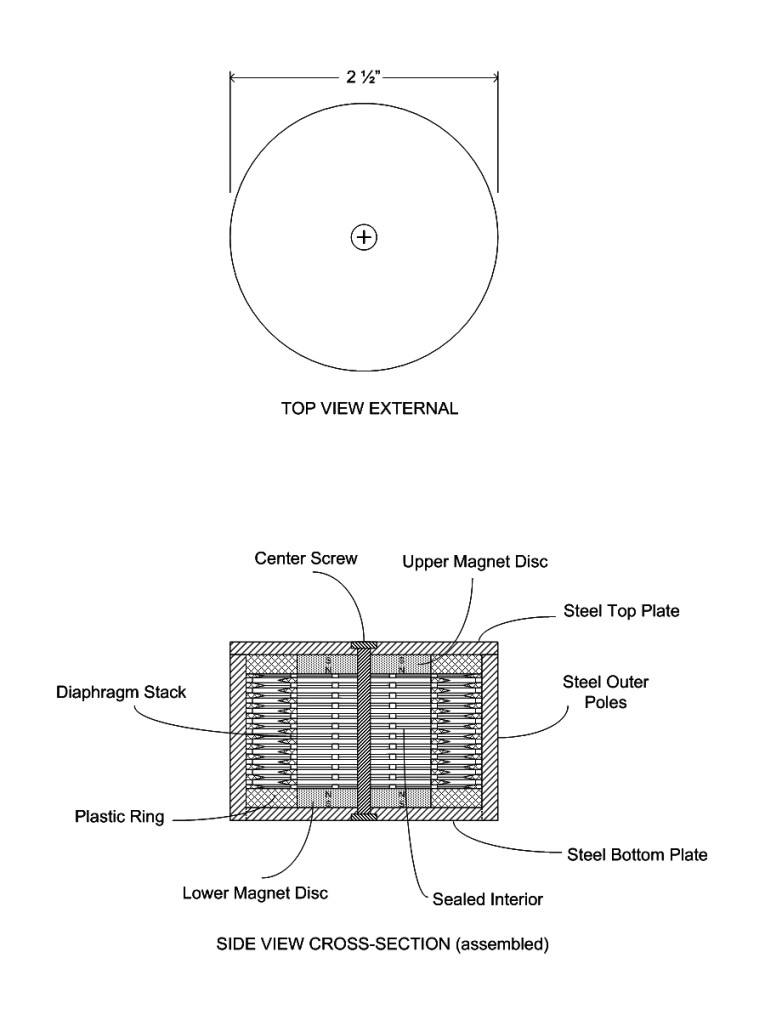
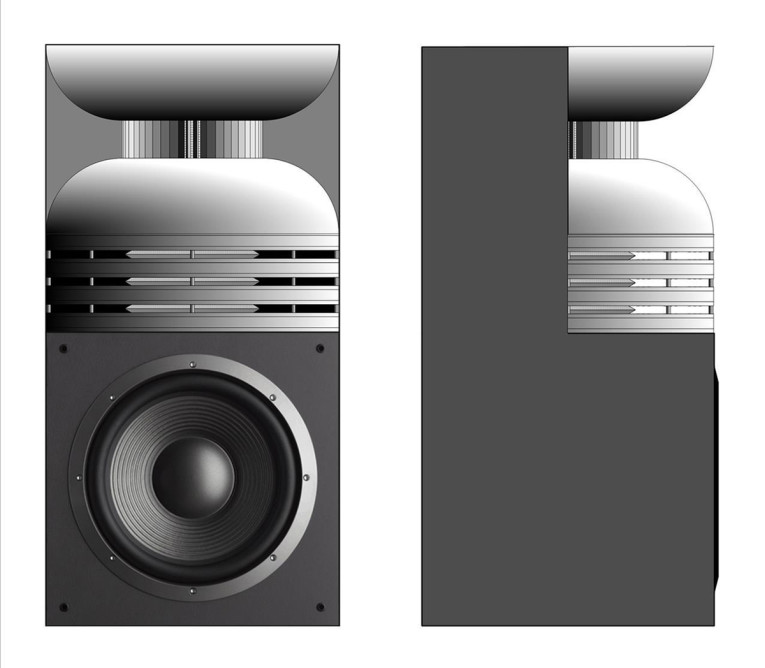
This new driver technology is comparable in cost, or in many cases is lower in cost, than other types of existing drivers in the mid to upper performance categories such as high-end moving coils, traditional AMT drivers, or other high-end driver types. Figure 1 shows an example of a small, low-cost version of the driver that can be used as a 360° mid-tweeter.
The form factor of this new driver is compact and attractive. It is scalable from the very small to the very large, without having any of the serious drawbacks (e.g., high voltages, excessive heat, expensive materials, high size and/or weight, etc.) that are required by alternative technologies.
Appropriate audio applications include:
• Home and Commercial Sound: Vastly improved horizontal and vertical coverage area of high-quality sound, and not just in the traditional, tiny “sweet spot” that is usually only located directly in front of the loudspeakers. Figure 2 shows a possible home audio incarnation of this technology.
• Headphones: Enables the creation of high-quality headphones, with much better clarity and loudness than any other current technology, along with extremely low levels of distortion.
• Pro Sound: Has the potential to create compression drivers, for pro sound applications, which have lower distortion, louder sound capability and smoother frequency response than any other driver technology.
• Autosound: Can be used to create high-quality, in-vehicle loudspeaker drivers that cover much wider frequency ranges and much wider coverage angles than any other driver technology, and which also have more flexible placement options for various vehicle locations.

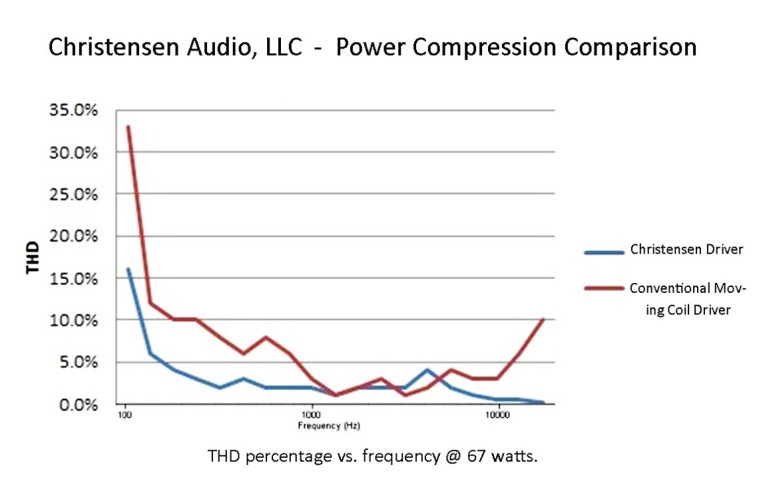
For compression driver use in pro sound products, this new technology also has an extremely beneficial combination of very low moving mass, very high moving surface area, large length of conductor in the magnetic field, and high magnetic field strength, which results in the mass-break frequency being several octaves higher than the typical 3.5 kHz exhibited by traditional moving-coil compression drivers (see Figure 3).
The initial, non-exclusive manufacturing licensee for this technology has already been signed, and products based on the technology are expected to be available during 2016. There are other licensing opportunities available on this technology, which currently has patents pending in the US, Europe, Japan, Canada, and China.
More information is available at www.christensenaudioip.com
This article was originally published in Voice Coil, January 2016






